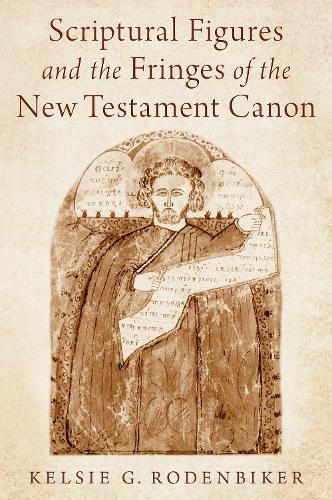Readings Newsletter
Become a Readings Member to make your shopping experience even easier.
Sign in or sign up for free!
You’re not far away from qualifying for FREE standard shipping within Australia
You’ve qualified for FREE standard shipping within Australia
The cart is loading…






As early as the second century, patristic theologians and historians began to debate the shape of a New Testament collection. Chief among the criteria for a work's inclusion was authentic attribution to a recognized apostolic figure. But neither the process of arbitrating a work's authenticity nor of determining the boundary of this developing authoritative collection were linear or straightforward. For one thing, the elasticity and permeability of tradition surrounding figures from the scriptural past -- that is, both illustrative scriptural exempla and apostolic authorial figures -- often clash with the rhetoric of strict vigilance over scriptural authenticity and intracanonical fidelity between the Christian Old and New Testaments.The Catholic Epistles -- seven letters attributed to the apostles James, Peter, John, and Jude -- played a much larger role in the canonical process than their diminutive size and oft-neglected status would suggest. Though they were perhaps the latest subcollection recognized to be among the New Testament (after the fourfold Gospel and the Pauline corpus), they were not its crowning feature but a wrench in the canonical gears. How did these apostolic letters, most of whose authorship was widely questioned by ancient ecclesiastical writers, eventually come to be accepted as authoritative works?Through the Catholic Epistles' attributed apostolic authors and use of illustrative exempla from the Jewish scriptural past, this book explores the relationship between the intertwined phenomena of canonical authority, pseudepigraphy, and exemplarity. The suspicion of apostolic pseudepigraphy and the broad range of scriptural links represented by the scriptural figures present throughout the Catholic Epistles prevented their unhesitating inclusion among the New Testament. And yet their apostolic association and substantive ties to Jewish and Christian scriptural tradition also underwrote their reception as authoritative scriptures. In the Catholic Epistles, exemplarity and canonicity are intertwined: scripture receives scripture; scripture begets scripture.
$9.00 standard shipping within Australia
FREE standard shipping within Australia for orders over $100.00
Express & International shipping calculated at checkout
As early as the second century, patristic theologians and historians began to debate the shape of a New Testament collection. Chief among the criteria for a work's inclusion was authentic attribution to a recognized apostolic figure. But neither the process of arbitrating a work's authenticity nor of determining the boundary of this developing authoritative collection were linear or straightforward. For one thing, the elasticity and permeability of tradition surrounding figures from the scriptural past -- that is, both illustrative scriptural exempla and apostolic authorial figures -- often clash with the rhetoric of strict vigilance over scriptural authenticity and intracanonical fidelity between the Christian Old and New Testaments.The Catholic Epistles -- seven letters attributed to the apostles James, Peter, John, and Jude -- played a much larger role in the canonical process than their diminutive size and oft-neglected status would suggest. Though they were perhaps the latest subcollection recognized to be among the New Testament (after the fourfold Gospel and the Pauline corpus), they were not its crowning feature but a wrench in the canonical gears. How did these apostolic letters, most of whose authorship was widely questioned by ancient ecclesiastical writers, eventually come to be accepted as authoritative works?Through the Catholic Epistles' attributed apostolic authors and use of illustrative exempla from the Jewish scriptural past, this book explores the relationship between the intertwined phenomena of canonical authority, pseudepigraphy, and exemplarity. The suspicion of apostolic pseudepigraphy and the broad range of scriptural links represented by the scriptural figures present throughout the Catholic Epistles prevented their unhesitating inclusion among the New Testament. And yet their apostolic association and substantive ties to Jewish and Christian scriptural tradition also underwrote their reception as authoritative scriptures. In the Catholic Epistles, exemplarity and canonicity are intertwined: scripture receives scripture; scripture begets scripture.